Affiliate links on Android Authority may earn us a commission. Learn more.
Past, present, and future of flexible displays
Published onOctober 2, 2014
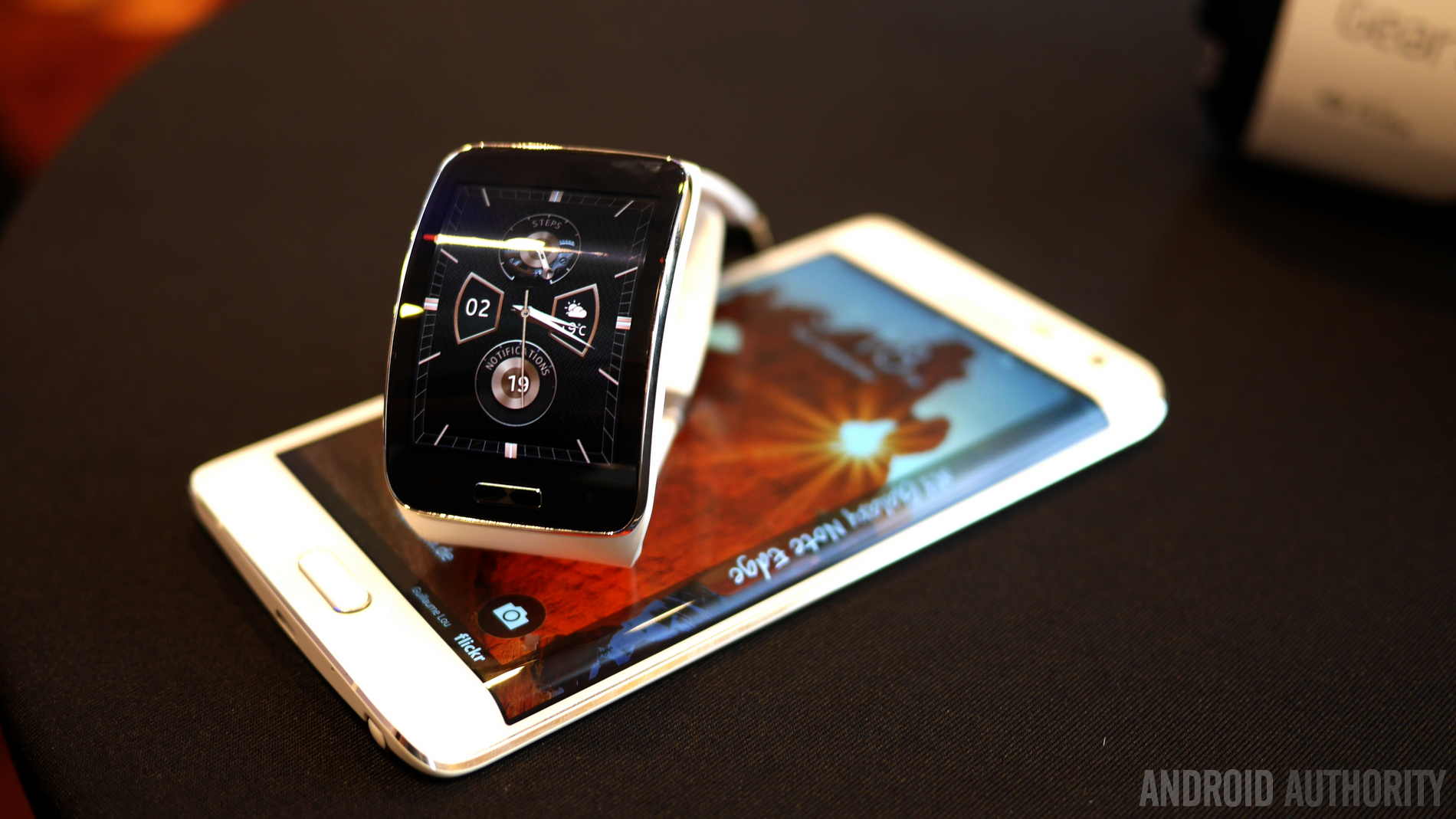
We are still a little way off from super bendable electronics and foldable displays, but smartphones and smartwatches with flexible and curved displays are slowly beginning to trickle into the marketplace. LG and Samsung had a pop with the G Flex and Galaxy Round, and the Galaxy Note Edge has taken the concept one stage further.
Despite only recently showing up in consumer electronics, the origins of flexible displays can be traced back to the 70s and the first e-paper display named Gyricon. The technology was built from tiny oil-filled pockets that could be rotated by an electrical charge to display black or white colors. Gyricon only ended up in small replaceable price tag displays in markets, but was the beginning of today’s display trend.
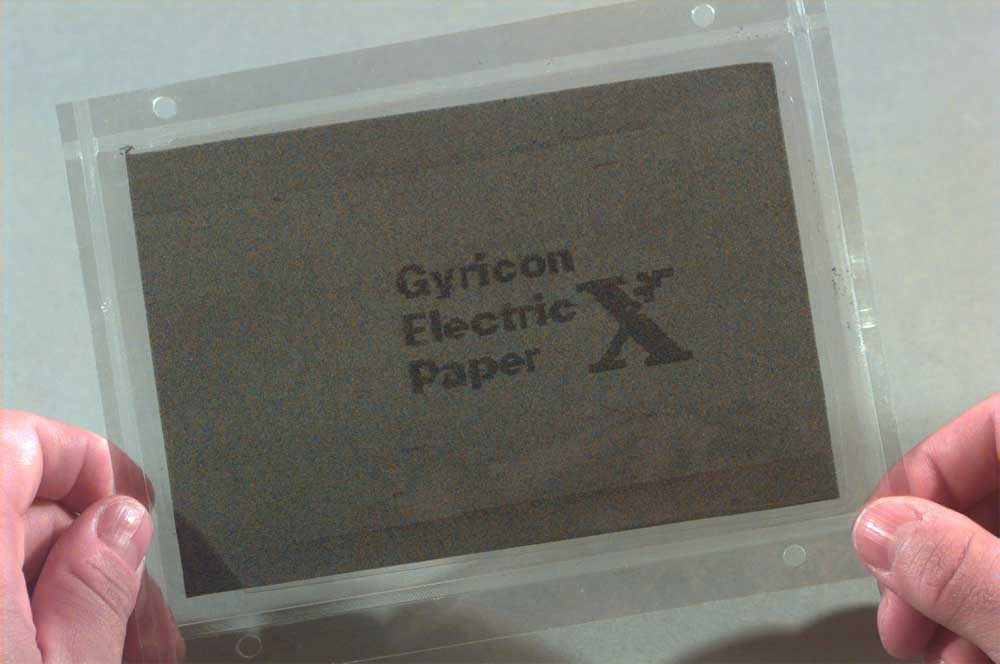
Researchers began making use of new materials in the early 2000s, of which organic thin film transistors (OTFT) appeared to be the most promising. However, it wasn’t until Plastic Logic started up its mass production of OTFT plastic displays that the idea appeared viable for consumer grade products.
In combination with Plastic Logic, Nokia’s Morph Concept was the first to portray flexible devices similar to what we imagine today, and led to the development of the early flexible e-reader and e-paper prototypes that you’ve probably seen. The first flexible AMOLED display was shown off by Samsung back in 2010. It was just a small 4.5 inch display with a resolution of 800×480.

The core technologies have already come a long way from the bendable e-reader and e-paper designs. Today we’re looking at flexible contact lenses and X-ray sensors. Importantly, general display performance has come a long way since those early days too. TFT backplanes are now able to offer the high performance required, allow developers to move past the basic black and white e-reader designs.
New Technologies
These days, there are three TFT technologies deemed suitable for use with flexible displays. There’s the already commonplace LTPS, which is used as the basis for all OLED smartphones and tablets due to its high electron mobility. Electron mobility being an essential quality for a backplane used with higher current LED technologies. However, it requires a high temperature process and is the least flexible of the TFT technologies available. Hence why Samsung’s smartphones aren’t as bendable as the early e-paper devices developed decades ago.
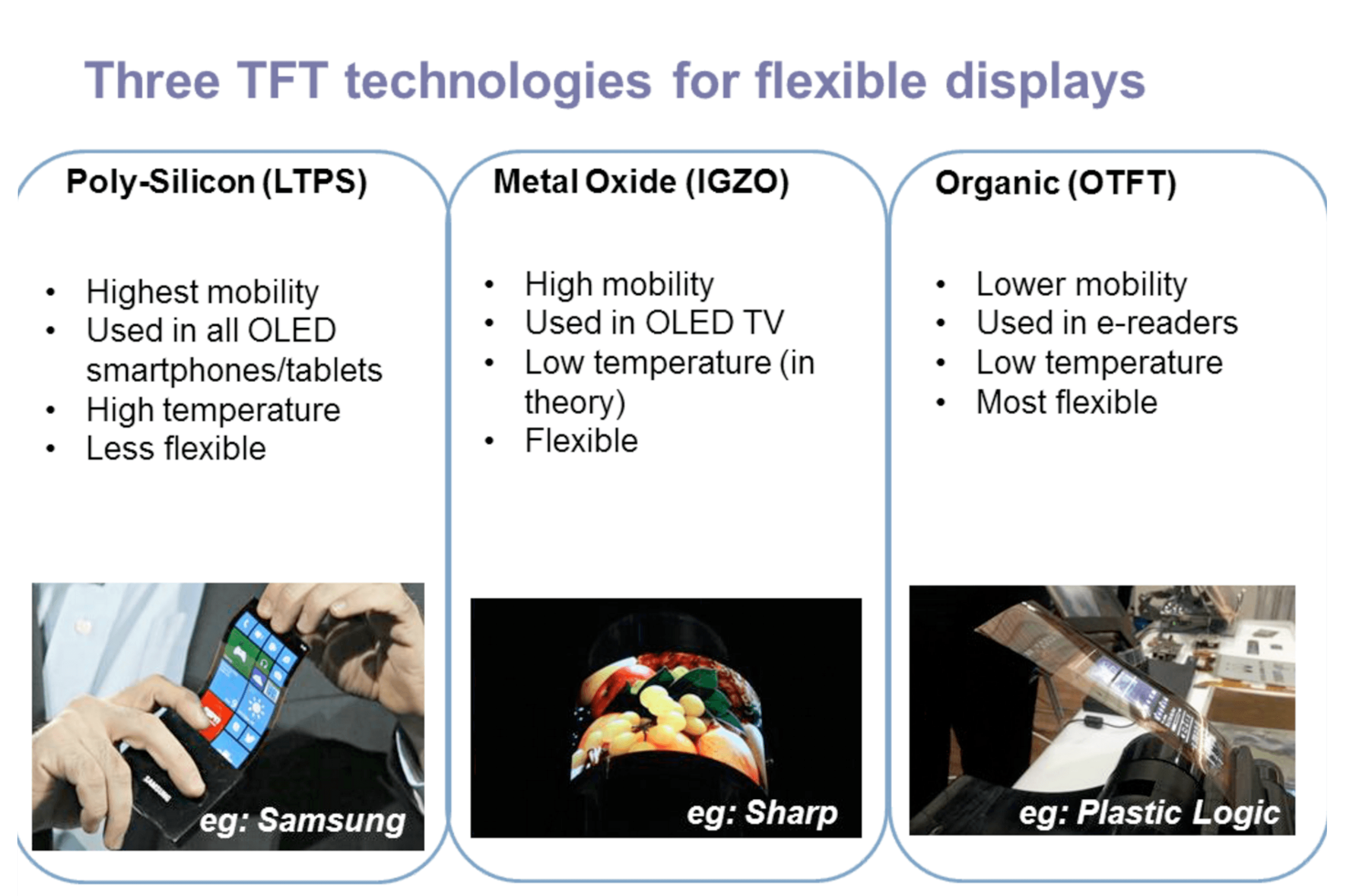
IGZO is also a suitable design for flexible materials. Although most commonly used in OLED TVs, IGZO is working its way into the smartphone market place as a lower cost alternative to LTPS. It also has a lower process temperature, making it more suitable for other electronics too, and is more flexible that LTPS. IGZO could end up being the perfect middle ground between price, performance, and flexibility.
These days, there are three TFT technologies deemed suitable for use with flexible displays.
OTFT is the most flexible backplane technology currently available, but is also the oldest. It appears in e-reader and some of the ultra-flexible paper thin designs that we have seen. However, the lower electron mobility of this technology makes it impractical for use with LEDs, hence why earlier display prototypes relied on the black and white E Ink look, and is why this technology isn’t as suitable for smartphones.
The other half of building flexible displays is developing sensors that are also bendable. Flexible and curved TVs are a little easier to design, as there no direct interaction with the user. But for smartphones and wearables we demand touch controls, and might even want heart rate monitors and temperature sensors.
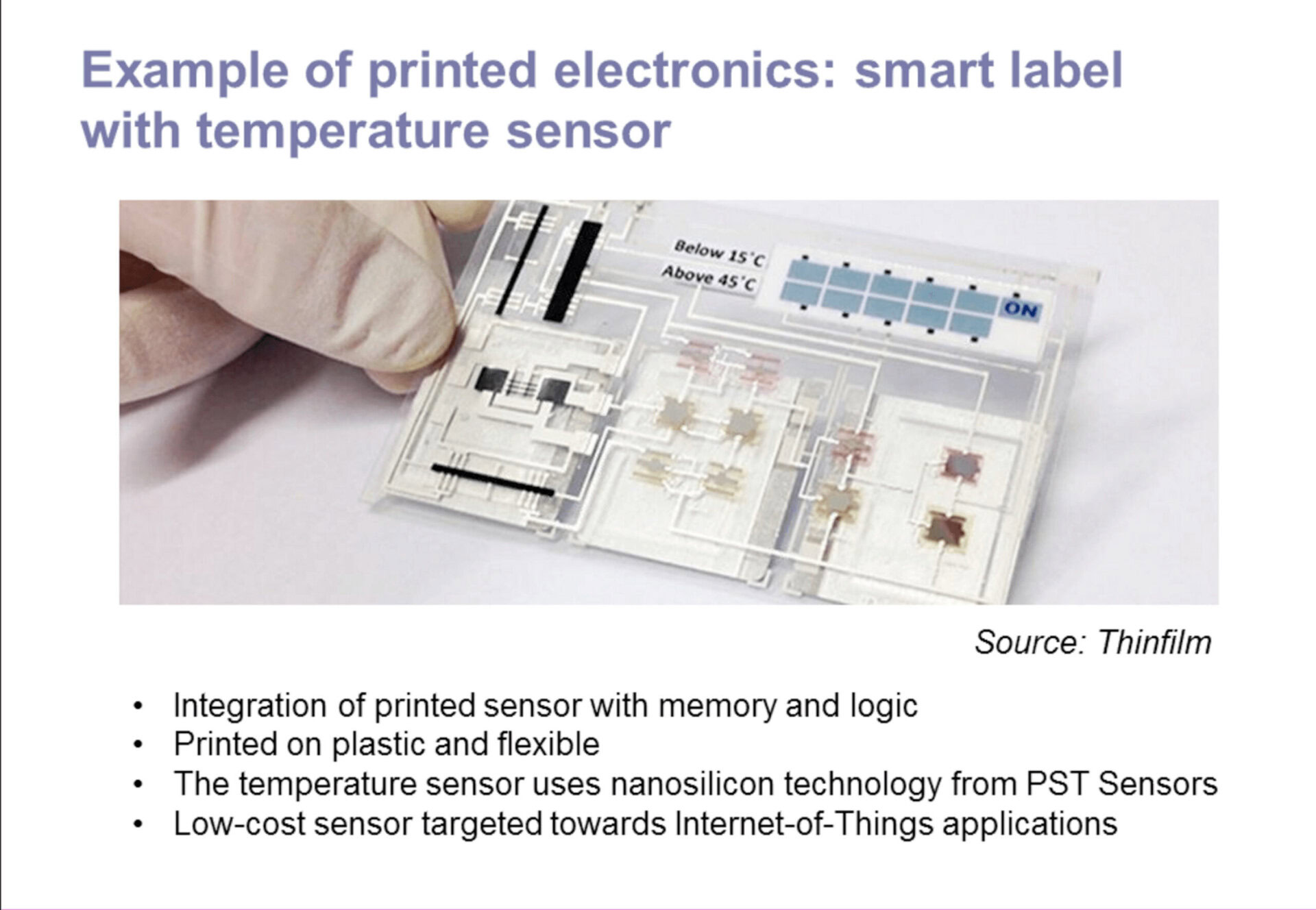
Fortunately, these technologies have grown alongside development in bendable displays, particularly as these processes have helped open the door to printable, flexible electronics. Pressure and capacitive sensors for touch displays can already be created from printed conductors, and there are also printable thermistors, piezoelectric resistors to detect force, and biosensors. A lot of this development is being spurred on by medical and military applications, as well as consumer electronics.
The Future
Even though flexible products are already rolling out, development in new ways to produce bendable displays seem to show no signs of slowing down. As well as improvements to existing technologies, research into materials like Graphene amd IGZO will help improve durability, quality, and price of future flexible electronic goods. Research into nano-inks and printable transistors could remove many of the limitations of current backplane technologies, and would also be much cheaper to manufacture.
Even though flexible products are already rolling out, development in new ways to produce bendable displays seem to show no signs of slowing down.
In the meantime, OLED will continue to be the technology of choice in this market, especially as smartwatch manufacturers continue to design their devices around it. Demand and production is already ramping up, due to products from Apple, LG, and Samsung. As a result, revenues expected to grow substantially over towards the end of the decade. Over the next five years, flexible AMOLEDs are expected to generate almost as much revenue as more traditional rigid displays.
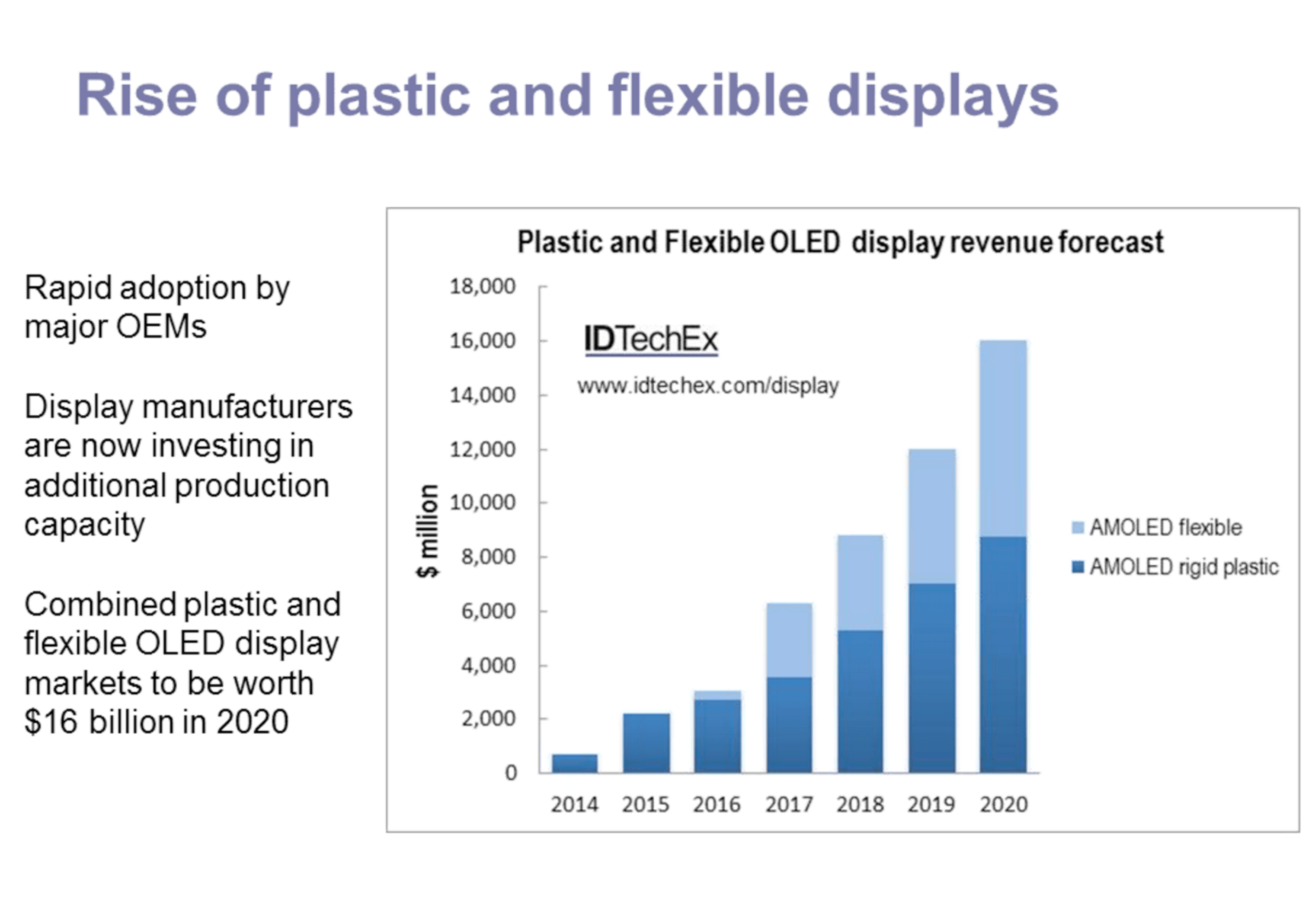
As far as the OLED market is concerned, flexible displays are a huge new avenue to explore which LCD is currently unable to compete in. We’re going to be seeing much more of this technology over the new few years.